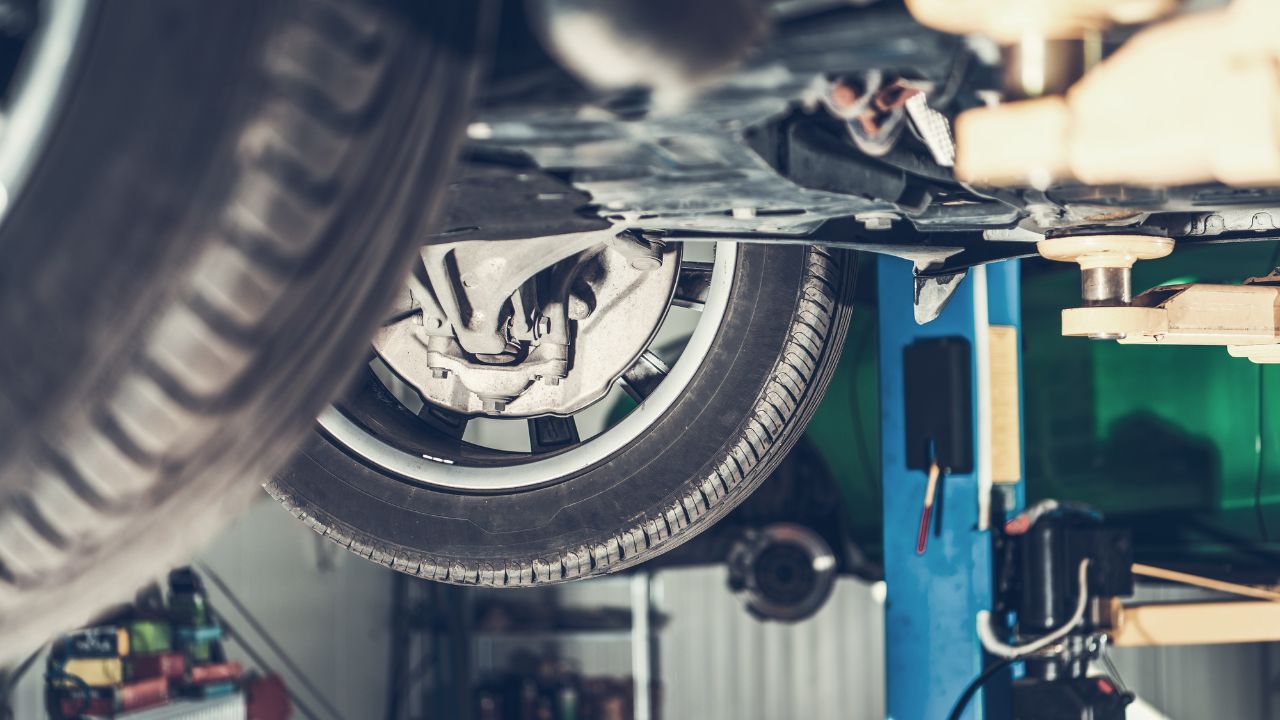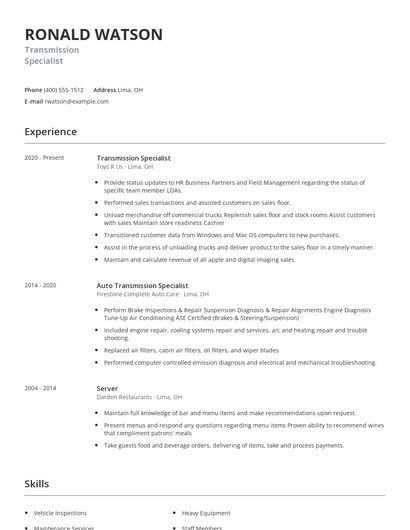
If you're looking to attend an automotive school in Arizona, you may be wondering what you can expect from such a program. Here's a look to Platt College Arizona Automotive Institute. UEI College. East Valley Institute of Technology. Information on high schools in the region, like Coconino High School, can also be found. These schools are all recognized by the auto industry and have a reputation for offering quality education.
Platt College-Arizona Automotive Institute
Platt College Arizona Automotive Institute in Glendale, Arizona is a small private college that offers two master's programs. Tuition costs about $34,000 per academic year. Affordable Colleges are an alternative. It is located in a safe area with a low crime rate. The school was founded in 1968 and enjoys a stellar reputation with the Better Business Bureau. The college offers two types of financial aid: federal and private.

UEI College
The Auto Technician Training program at UEI College Arizona provides students with the skills necessary to become entry-level automotive technicians. This course is a combination of online classroom training and hands-on training at a real workshop. Students will learn about the fuel and ignition systems, transmissions and other aspects of cars. The course also includes engine theory. The course can be completed in a period of 10 months. The program prepares students for entry-level positions in the automotive sector upon completion.
East Valley Institute of Technology
Arizona's East Valley Institute of Technology (EVIT), an automotive school, was established in 1991. The company has 50 employees and an annual turnover of $2.6M. Excellent learning opportunities for employees. There are many reasons to consider EVIT for your automotive training. Its reputation is unparalleled, and its dedication towards student success speaks for itself. You can read more about EVIT.
Coconino High School
Coconino high is a public secondary school located in Flagstaff. It is the top-ranked school for auto-related subjects in Flagstaff. It is located at Flagstaff Unified School district, Arizona. A high school education is an important aspect of an automotive industry career, but many people are unaware of the different opportunities and careers available. Below are some tips to help you choose the right school.

GateWay Community College
GateWay Community College, a Phoenix community college with regional accreditation, is located in Phoenix. It was established in 1968 and is one of ten colleges that makes up the Maricopa County Community College District. GateWay's automotive school can be enrolled in by anyone interested in learning more or simply wanting to earn a GED. The process of earning your certificate takes only six months.
FAQ
How long does an apprenticeship in automotive mechanics last?
The apprenticeship to become an automotive mechanic takes about three years. The apprenticeship includes two years studying at school and two more as an apprentice. The first year of training is spent in the trade. This includes theory and practical skills as well as safety procedures. During this time, you'll also learn how to use tools safely and efficiently. After the first year, a second year will be spent on-thejob training. This year you'll get experience in different trades. You'll have the opportunity to attend formal courses during these periods too.
The final year is dedicated to earning certifications and qualifications in the field. These include NVQs or National Vocational Qualifications. These are earned after passing exams that cover specific topics in the industry. In addition, there are HNCs (Higher National Certificates) that cover general subjects such as management, business administration, and customer service. City & Guilds certificates can be obtained for individuals who want to learn certain trades.
What are the basics of car mechanics?
For an auto mechanic job, you don’t have to be an expert in cars. All you need to know is how to fix things. That's why most people start doing jobs like fitting brake pads or changing tires before progressing to more complex repairs.
It is important to be able to read and understand diagrams as well as written instructions. You must also be able judge if parts need to replaced or repaired.
It's important to remember that you shouldn't attempt to repair vehicles without having received proper training and guidance. This is especially true if your job involves expensive parts like transmissions or engines.
Although you won't have to know much about automobiles, you must be familiar with the basics of mechanical engineering as well as physics. This involves understanding how engines work and how brakes work.
You should also be ready to handle all kinds of situations. For example, you may find yourself working on a vehicle that has been involved in a serious accident. Additionally, you will need to have experience with handling accidents and breakdowns.
It is important to be open to learning new skills quickly. Not only will you need to be capable of diagnosing problems, but you also need to be able perform simple maintenance tasks like tightening nuts.
How can I prepare for a apprenticeship as a mechanic?
It is essential to understand what you are getting into. You need to understand the mechanics of cars and how they work. This will make it easy to find the right place to start your first day in the garage.
You also need to know how to fix simple problems such as broken lights, tires, etc.
This should help you learn how to diagnose issues and repair them yourself.
Also, it is important to know how parts fit together so that you can put them back together.
And finally, you must know how to use tools safely and efficiently.
All these things will help you to become a competent mechanic.
Is it important which college I go?
You're wrong. There is no difference in the programs offered by colleges for getting into automotive work. However, some schools offer better programs than others so if you're looking for something more specialized, look elsewhere.
What qualifications are required to become a mechanic
A series of exams is necessary to become a mechanic. These include:
-
A general knowledge assessment
-
A practical exam
-
An apprenticeship test
These tests are intended to make sure you have a solid understanding of the basics of mechanics before you can start your career as a mechanic.
Once you've passed these tests, you'll be eligible to work as a mechanic. However, you'll still need to complete an apprenticeship. This will include training in the trade.
To fully understand the mechanics of vehicle repairs, you'll need workshops and classes. You'll also have to work alongside experienced mechanics.
For mechanic success, you'll need to be focused and meticulous. Repairs to vehicles require you to pay attention to every detail.
You'll need patience and persistence to become a successful mechanic. If you don’t love to follow instructions, this may not the right career path.
You could make a great career out of your love for cars and the work that goes into fixing them.
Statistics
- 52% of Mechanics in the United States think their salaries are enough for the cost of living in their area. (indeed.com)
- According to the BLS, total auto technician employment is expected to exceed 705,000 by 2030. (uti.edu)
- There were 749,900 jobs available for automotive service technicians and mechanics in 2016, which is expected to grow by six percent through 2026. (jobhero.com)
External Links
How To
How to correctly diagnose your vehicle for repairs
The symptoms of your vehicle are the first thing you need to look at in order to determine whether it is in dire need of repairs. Follow these steps to properly diagnose your vehicle.
-
Check engine lights. Inspect the dashboard light indicators. These include the engine lights, the oil pressure gauge and the battery light indicators. The RPM gauge and coolant temperature gauge should also be checked. If they have been flashing for more days than usual, it could be a sign that something is wrong with the vehicle.
-
Take a look at the treads. Tire wear can lead to problems in handling and brake performance. It is also important to inspect the wheel treads. They should be clean, and they should be smooth. This can be done by removing the wheels from the vehicle and taking them off. A flashlight can be used to check how worn the treads are.
-
Pay attention to the level of your brake fluid. It is important to keep track of how much brake fluid you have in your car. You can ensure that your brakes are working properly by monitoring the level of brake fluid in your vehicle. If your brake fluid level is low they might not work properly when you apply pressure.
-
The suspension system should be tested. Most vehicles have a suspension system that absorbs shocks and vibrations. It allows for better control, smooth acceleration, and deceleration. Your vehicle might feel wobbly, or shake uncontrollably if it has a bad suspension. Try putting some weight on your front or rear axle to determine if you have a suspension problem.
-
Examine the steering wheel. The steering column is used to link the steering wheel with the rest of vehicle's components. Many accidents can cause damage to steering columns. If yours feels loose or shaky, you should replace it.
-
The exhaust pipe should be observed. The exhaust pipe helps move gases from a combustion chamber into the atmosphere. If the exhaust pipe is damaged or leaks, harmful fumes can enter your cabin. You should also fix any bent tailpipes immediately.
-
Look under your hood. If you see anything unusual, take a look under the hood. Leakage of fluids in your engine could indicate that it is leaking. Also, professional technicians should be called if you detect an unusual smell coming out of your engine compartment.
-
It is important to inspect the air filter. The air filter in your vehicle collects dirt and dust from the environment. A dirty air filter causes your vehicle to run poorly. Replace your air filter regularly.
-
Make sure you check the fan belt. Your vehicle's fanbel is what connects the engine and the transmission. If the fanbel breaks, your engine won't turn. It is easy to replace the belt. You only need a screwdriver or pliers to replace your belt.
-
The radiator hose and hoses should be checked. The radiator hose carries water from the radiator to the engine. It can become cracked or damaged and leak hot liquid onto your engine. The hose can be repaired with a pair or needle-nosepliers, and a wire brush.
-
Make sure you have the windshield wipers checked. Windshield wipers work by using electricity to remove rain and snow. If they stop working they could leave streaks behind on your window glass. Simply change the washer oil to fix the problem.
-
You should inspect the cables. The battery cables provide power for the electrical systems in your car. Always disconnect the negative wire before you replace batteries. Failure to do so can damage your alternator.
-
Be sure to check your headlights. Headlights are used to illuminate the road ahead. If they don't work properly, it can cause poor visibility. You can check the bulbs to make sure they aren't burned out.
-
Always check your lights. Lights warn other drivers when you approach them at night. It could cause distraction and even lead to an accident if it doesn't work.
-
Make sure you check your brakes. Before you get in a car accident, your brakes will be slowing down your vehicle. If the brakes fail to work correctly, your car could lose control and collide with another vehicle.
-
Change your oil. Keep your engine lubricated with oil. It helps keep metal parts from getting too worn down. It is recommended that the oil be changed every other month.